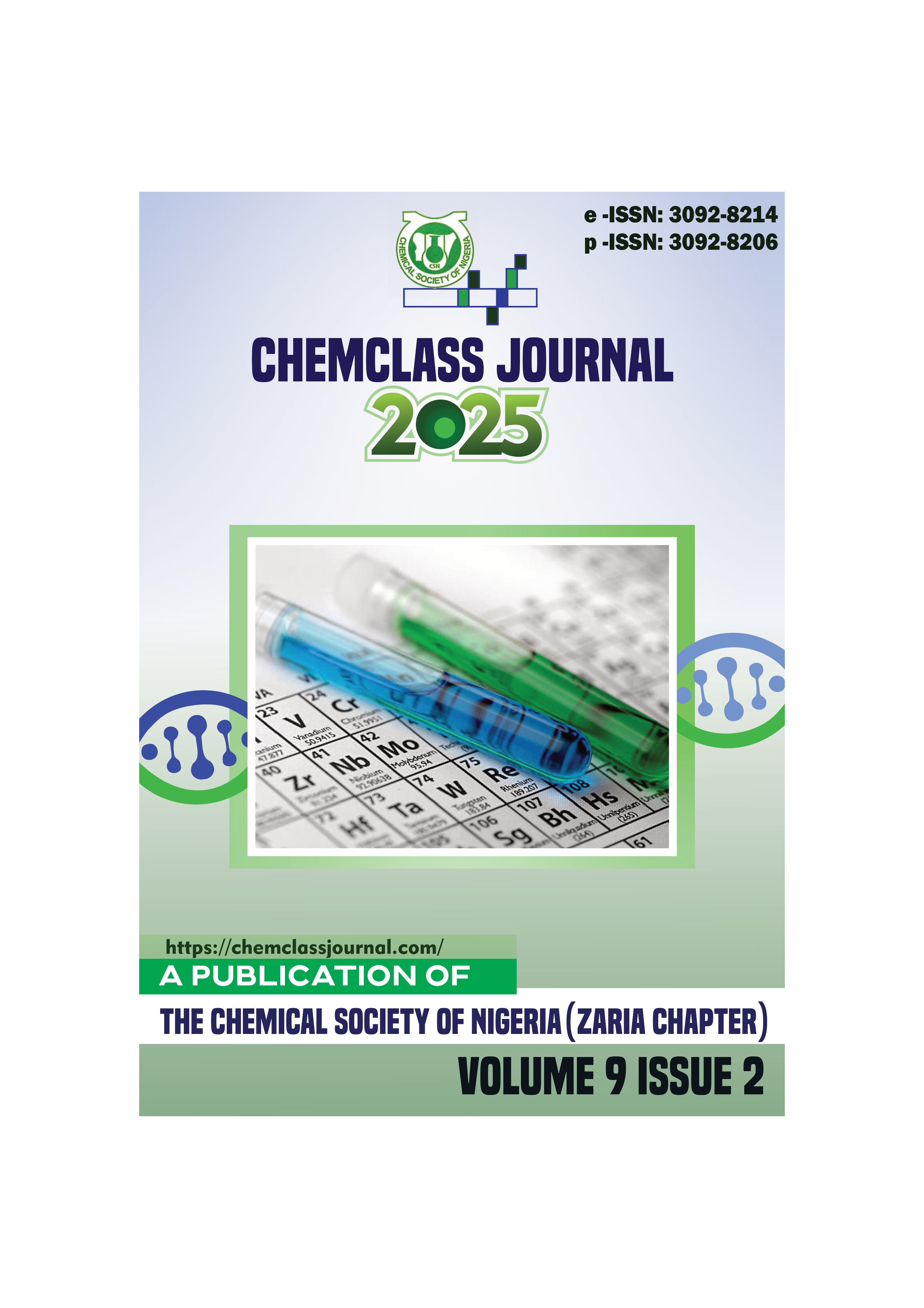Phytochemical and Anti-Diarrheal Evaluations of the Crude Ethanol Extracts from Cassia singueana Del. and Parkia biglobosa Jacq. ex. G. Don Using Charcoal Transit in Rats
DOI:
https://doi.org/10.33003/chemclass-2025-0901/153Keywords:
Cassia singueana Del., Parkia biglobosa Jacq. ex. G. Don., charcoal , rat , rootbark , stembarkAbstract
Plant as drug has been in existence since the period of Man’s civilization across the World. Modern
scientific techniques have led to isolation and identification of thousands of phytochemicals, many of which
had served as chemical leads for the development of therapeutic drugs against several diseases. This study
was aimed to reveal the phytochemical contents of Cassia singueana (rootbark) and Parkia biglobosa
(stembark) using standard procedure and their charcoal transit mobility levels in rats. The phytochemical
analysis of the extracts revealed the presence of phytocompounds like alkaloids, anthraquinones, cardiac
glycosides, flavonoids, terpenoids and saponins. The oral acute lethal dose (LD50) in rats were calculated
to be 3807.89 mg/kg bd. wt. and 5000 mg/kg bd. wt. respectively for Cassia singueana and Parkia
biglobosa. The charcoal mobility test was carried out using rats in accordance with standard procedures
and results of the charcoal transit study revealed that the mean percentage distance travelled by the control
5 mL/kg bd. wt. (normal saline) and atropine sulphate 5 mg/kg bd. wt. were 0.00% and 88.99%
respectively. On the other hand, the crude extracts of Cassia singueana and Parkia biglobosa travelled a
mean percentage distance of 52.88% and 52.12% at 300 mg/kg bd. wt. 21.71% and 58.09% percentage
travel were recorded at 600 mg/kg bd. wt. and 19.81% and 100% at 1200 mg/kg bd. wt. respectively. The
Cassia singueana crude extract acted in non-dose-dependent manner while Parkia biglobosa acted in dose
dependent manner. Thus, Cassia singueana revealed the highest effects at low dose while P. biglobosa was
effective at high dose in rats. Therefore, the use of both extracts as anti-diarrheal agents in folklore medicine
have a scientific support due to the resistance of the flow of the charcoal transit in rats





 ChemClass Journal
ChemClass Journal
